The ancient Town of Pembroke dates back to the 11th Century, when the first castle was built. Over the centuries the castle was updated and expanded to become the great structure that can be seen today, the birthplace of Henry Tudor. What more fitting a place is it then to have the War Memorial to the men of the town who lost their lives during both World Wars sited at the entrance to this magnificent fortress. This granite cenotaph stands on the green by the entrance to the castle, and contains the names of the fallen of the Parishes of St Mary, St Michael and of Monkton. Each relevant Church also houses its own separate memorial, some with slight differences in the names. Many thanks again to Les Nixon for supplying photographs of the War Memorial, and to Mike Berrell for supplying photos of the individual Church Memorials. This page of the website commemorates the men of Monkton who fell during both World Wars.
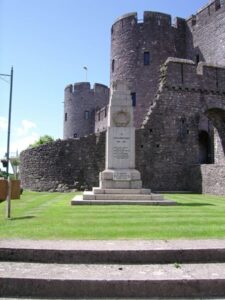
The Great War, 1914-1918
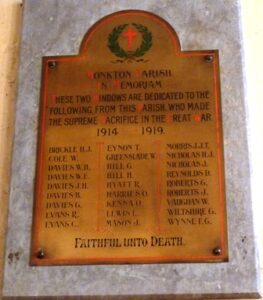
Herbert James Brickle, Lance Corporal, 38286, Welsh Regiment. Herbert was the son of John and Elizabeth Brickle, of 8, Monkton Village, Pembroke. He was a plumber prior to the war, and enlisted at Pembroke into the Welsh Regiment. Herbert was posted to the 8th Battalion, Welsh Regiment, which was attached to 40 Brigade, 13th (Western) Division. During July 1915 the Divisional infantry landed on Cape Helles and relieved the 29th Division. They left and returned to Mudros at the end of the month, and the entire Division landed at ANZAC Cove from 3 August 1915, taking part in the Battles of Sari Bair, Russell’s Top, and Hill 60, ANZAC. Soon afterwards the Division was transferred from ANZAC to Suvla Bay, and it was evacuated from Suvla on 19 December 1915, and moved after a week’s rest to the Helles bridgehead, where they faced the last Turkish attacks at Helles. On 8 January 1916, the Division was evacuated from Helles, and by 31 January 1916 was concentrated at Port Said, where it held forward posts in the Suez Canal defences. On 12 February 1916 the Division began to move to Mesopotamia to strengthen the force being assembled for the relief of the besieged garrison at Kut al Amara. Herbert was one of many men to succumb to disease on the march into Mesopotamia. He died on 10 March 1916 aged 39, and is commemorated on the Basra Memorial, Iraq.
W. Cole. This man cannot presently be identified.
Benjamin Davies, Private, 235731, Royal Welsh Fusiliers. Benjamin was born at Monkton in 1890, the son of William and Esther Davies, of Hundleton. He enlisted at Pembroke into the Welsh Regiment on 9 February 1916, and on 25 July 1917 was posted to the 16th Battalion, Welsh Regiment in France. On the following month he was transferred to the 10th Battalion, Royal Welsh Fusiliers. He was wounded in October and hospitalised for a while before being posted to the 24th (Denbighshire Yeomanry) Battalion, Royal Welsh Fusiliers in June 1918. The battalion had recently moved to France from Palestine after being transferred to 94 Brigade, 31st Division. Upon transfer to the 31st Division, the 24th RWF was sent to Flanders, and helped reinforce the battered forces there which had seen severe fighting since the launching of the German Lys offensive in April 1918. The 31st Division held the line south of the Ypres Salient. Benjamin was wounded during heavy fighting on 28 June 1918, and died that same day, aged 28. He is buried in Cinq Rues British Cemetery, Hazebrouck, France.
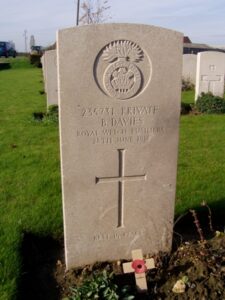
George Davies, Petty Officer Stoker, 291706, Royal Navy. George was born in Stackpole on 16 May 1871, the son of James and Ann Davies. The family later moved to of Mount Pleasant, Maiden Wells, Pembroke. He served in the Royal Navy at the outbreak of the Great War, in HMS Ardent. The Ardent was an Acasta Class Destroyer, and formed part of the 4th Destroyer Flotilla of the Grand Fleet, led by Admiral Sir John Jellicoe. The Grand Fleet played a central role in the Great Battle of Jutland, which began on 31 May 1916, and it was on the second day of the Battle, 1 June 1916, that the Ardent was sunk. An extract from the Official History stated- ‘This destroyer now found herself alone, and having escaped with little injury, made away southwards in the hope of finding the rest of her division, which in fact had ceased to exist. What she fell in with was something quite different…. Lieutenant-Commander A. Marsden in the Ardent saw smoke ahead of him, and thinking it came from his consorts, he made towards it. Then the form of a large German ship loomed up, and without hesitation he attacked. Another torpedo was fired at very close range, but before he could see the result he was blinded by the searchlights of four battleships in line ahead. Out of the glare came the inevitable hurricane of shell. In a minute or so the Ardent was a mere mass of scrap-iron, and switching off their lights, the enemy disappeared and left her to sink helpless and in total darkness. She was lost with all hands (12.19) except Lieutenant-Commander Marsden and one man.’ George Davies was lost in the sinking, and is remembered on the Plymouth Naval Memorial in Devon, on Panel 16. He was 37 years old. The memorial in Monkton Priory shows G Davies, whilst the Cenotaph shows J. Davies.
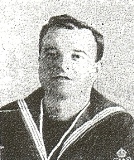
John Davies, Sergeant, 21726, South Wales Borderers. John was born at Pembroke, and enlisted at Newport into the South Wales Borderers. He landed in France in 4 December 1915, and in March 1916 was transferred to the 2nd Battalion, South Wales Borderers, which had just arrived after servine in Gallipoli, attached to 87 Brigade, 29th Division. The Division took part in its first major action in France during the 1916 Somme Offensive, and fought at the Battles of Albert and Le Transloy, suffering heavy casualties. In the spring of 1917 they fought at the Battle of the Scarpe, which was part of the Arras Offensive, and then moved further north to Ypres, fighting throughout the Battle of Passchendael before moving to Cambrai. Here they fought at the Battle of Cambrai in November and December 1917 before moving back to Flanders early in 1918. The German Spring Offensive hit the British on the Somme on 21 March 1918, and hit in Flanders just weeks later. The 29th Division fought at the desperate defensive battles of Estaires, Messines, Bailleul and Kemmel, before the war turned in favour of the Allies after a series of successes on the Somme in August. The Division then took part in the Offensive in Flanders, where they began to reclaim the ground lost earlier in the year. John was killed during the advance, on 29 September 1918. He is buried at Zantvoorde British Cemetery, Belgium. The memorial in Monkton Priory shows G Davies, whilst the Cenotaph shows J. Davies.
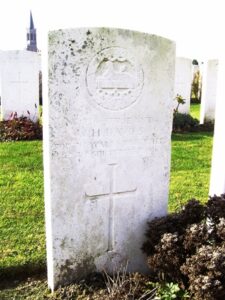
Joshua H. Davies, Private, 402, Welsh Regiment. Joshua was the son of George and Sarah Davies, of 18, Owen Street, Orange Gardens, Pembroke. He served with the local Territorial Battalion, the 1/4th Battalion, Welsh Regiment. The battalion formed at Carmarthen at the outbreak of war, becoming attached to 159 Brigade, 53rd (Welsh) Division. The 53rd Division moved to the Mediterranean, sailing from Devonport in July 1915 arriving at Mudros by the 5th August, 1915. From here they moved to Gallipoli, landing on 9 August 1915. Here they immediately faced the chaotic leadership that was to lead to the ultimate failure of the campaign, and spent the next few days in isolated pockets, fighting against a Turkish counter-attack during the Battle of Sari Bair, and then at the Attack on Scimitar Hill. The Division remained here throughout the coming months, and lost many men due to sickness and disease. Joshua was sadly one of these. He was evacuated to Hospital at Egypt where he died on 28 October 1915 aged just 21. Joshua is buried at Alexandria (Chatby) Military and War Memorial Cemetery, Egypt.
William Ernest Davies, Private, G/44036, Duke of Cambridge’s Own Middlesex Regiment. William was the son of Owen and Sarah Jane Davies, of 6, Quarry Road, Monkton. He enlisted at Surrey into the Army, and was posted to the 17th Battalion, Middlesex Regiment, which in October 1915 became attached to 6 Brigade, 2nd Division at Loos. In the summer of 1916 the Division were on the Somme, and took part in the Battle of Delville Wood and the Battle of the Ancre, and the ensuing Operations on the Ancre. William was killed on the Ancre on 13 November 1916, aged 26. He is buried at Mailly Wood Cemetery, Mailly-Maillet, France.
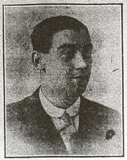

William Herbert Davies, Shipwright 1st Class, 346304 (CH), Royal Navy. William was born on 6 December 1888, the son of William and Ada Davies, of Prospect House, Monkton. He served aboard HMS Bacchante, a Cressy Class Armoured Cruiser. Bacchante served for a while with the Mediterranean Fleet. In 1906 she was transferred to the North America and West Indies Squadron and served there until she returned to home waters. At the outbreak of the First World War, Bacchante served as the flagship of the Live Bait Squadron, blockading the English Channel from the North Sea to German traffic. She took part in the landing at Anzac Cove during the Battle of Gallipoli in 1915. When the infantry came under fire from Turkish artillery at Gaba Tepe, Bacchante approached close in to shore and fired directly on the gun emplacements in an attempt to silence them. She survived the war, but William died just three months after the Armistice, on 17 February 1919, aged 32. He is buried at Monkton, at St. Nicholas Cemetery.
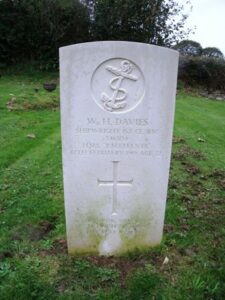
C. Evans. This man cannot presently be identified.
Robert Evans, Private, 203064, South Lancashire Regiment. Robert was the Husband of Beattie Evans, of 19, Mansell Street, Orange Gardens, Pembroke. He enlisted at Pembroke Dock into the Army, joining the 2/4th Battalion, South Lancashire Regiment, part of 172 Brigade, 57th (2nd West Lancs.) Division. The Division moved to France from 7 February 1917, and moved to positions in Flanders. Robert was sadly killed in action just two months later, on 18 April 1917. He is buried at Estaires Communal Cemetery, France. Beattie went on the remarry after the war, becoming Mrs Beattie Stratford.
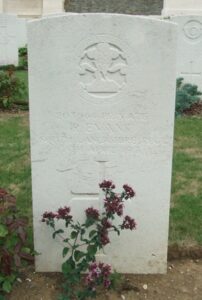
Thomas Eynon, Private, 19992, Welsh Regiment. Thomas was the son of Thomas and Mary Eynon, of Castlemartin. He lived with his Aunt, Mrs Hannah Beddoe, at India Row, Monkton prior to the war. Thomas enlisted at Pembroke into the 15th (Carmarthenshire) Battalion, the Welsh Regiment, which was known as the Carmarthen pals. The Battalion formed part of 114 Brigade, 38th (Welsh) Division, and landed in France during December, 1915. They were initiated into trench warfare in Flanders, around Fleurbaix, before moving South prior to the July 1916 Somme Offensive. It was in the period leading up to the Somme Battles that Thomas was to die. He was killed in Action on 13 March 1916 while the Battalion was holding the line near the La Bassée Canal. He was 33 years old, and is buried in Guards Cemetery, Windy Corner, Cuinchy, in Grave III. M. 6.
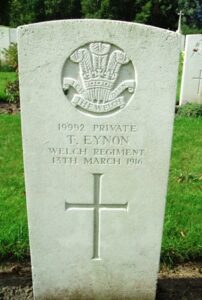
William George Greenslade, Gunner, 131053, Royal Garrison Artillery. William was born in 1898, the son of Frank and Elizabeth Greenslade, of Whitegate, Hundleton. He enlisted at Pembroke into the 144th Siege Battery, Royal Garrison Artillery. The Battery moved to France in August 1916, and probably moved to Ypres. Little is known of William’s service, but he was only 19 years old when he died of Wounds, on 21 October 1917. He is buried in Wimereux Communal Cemetery, France.
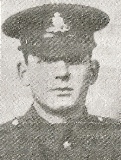
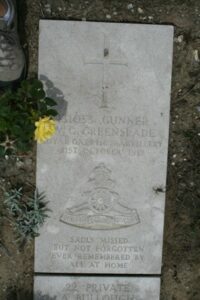
Owen Harries, Sergeant, 240791, Royal Warwickshire Regiment. Owen was the son of William and Margaret Harries, of 6, Rose Cottage, Golden, Pembroke. He enlisted at Birmingham into the Army, and was posted to the 2/6th Battalion, Royal Warwickshire Regiment, which was attached to 182 Brigade, 61st (2nd South Midland) Division. The division landed in France on 21 May 1916, and moved to the Flanders sector, near Fromelles. On 19 July 1916 the division took part in a combined attack with the 4th Australian Division, as a diversion to the main attack on the Somme, but it was a slaughter, with thousands of lives lost needlessly. Such was the damage to the Division and its reputation that it was not used again other than for holding trench lines until 1917, when it took part in the advance to the Hindenburg Line. On 17 March, it captured Chaulnes and Bapaume. Later that year it fought at Battle of Langemarck, between 16 and 18 August 1917, as part of the Third Battle of Ypres, and in late August and early September it was involved in the efforts to push the line forward at positions around Schuler Farm and Aisne Farm near Kerselaar. The Division then moved south, where it was to take part in the Battle of Cambrai, between 20 November and 7 December 1917. Owen was wounded at Cambrai, and evacuated to the Base Hospital at Rouen, where he died of his wounds on 17 December 1917, aged 26. He is buried at St. Sever Cemetery Extension, Rouen. The memorial in Monkton Priory shows O. Harries, whilst the Cenotaph shows W. Harries.
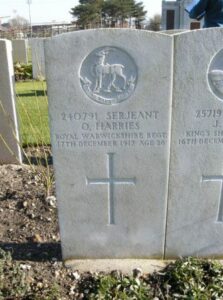
William Harries, Private, 19394, Oxfordshire And Buckinghamshire Light Infantry. William was born at Pembroke, and was the son of Martha Fortune (formerly Harries), and Edwin C. Fortune (Stepfather), of Quickwell Hill, St. David’s, Pembrokeshire. He enlisted at Haverfordwest into the Army, and was posted to France on 17 December 1915, joining the 2nd Battalion, Ox and Bucks Light Infantry, which was attached to 5 Brigade, 2nd Division. In the summer of 1916 the Division was on the Somme, and took part in the Battle of Delville Wood, the Battle of the Ancre, and the ensuing Operations on the Ancre. William was killed on the Ancre on 13 November 1916, aged 24. He is commemorated on the Thiepval Memorial, France. The memorial in Monkton Priory shows O. Harries, whilst the Cenotaph shows W. Harries.
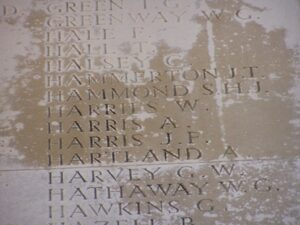
Robert Hiatt, Private, 22276, Gloucestershire Regiment. Robert was born at Little Walford, Warwickshire in 1889. He probably worked at Monkton as a groom prior to the war, and enlisted at Shipston-on-Stour into the Southern Cavalry Depot. He later transferred into the 10th Battalion, Gloucestershire Regiment, which moved to France in August 1915 and became attached to 1 Brigade, 1st Division at Loos. The division moved South to the Somme in 1916, where they fought during the opening of the Somme Offensive at the Battle of Albert, then at Bazentin, Pozières, and at Flers-Courcelette. Robert was killed at Flers on 19 August 1916, aged 27. He has no known grave, and is commemorated on the Thiepval Memorial, France.
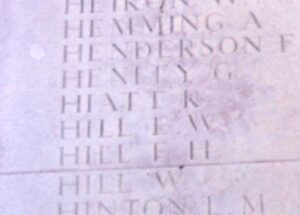
Arthur Hill, Private, 200084, Welsh Regiment. Arthur was born in 1892, the son of William and Mary Hill, of Monkton Lane, Monkton. He enlisted at Pembroke on 7 July 1913 into the 4th Battalion, Welsh Regiment, which was the local Territorial battalion, attached to 158 Brigade, 53rd (Welsh) Division. Arthur landed at Gallipoli with the 4th Welsh in August 1915 and fought throughout the war with the battalion, seeing action at Gallipoli, Egypt and Palestine. Following the Armistice he remained in Egypt with the 4th/5th Welsh before being demobilised on 2 September 1919. He returned to Monkton, but had contracted Malaria during his time overseas and as a result developed Tuberculosis. He married Dorothy Davies whilst convalescing at Talgarth in 1921, and the couple moved back to Monkton where Arthur died on 10 April 1923, aged 31, after the cut odd date for commemoration by the CWGC. He is commemorated on the Pembroke and Monkton cenotaph, but not on the Monkton Priory Memorial.
George Henry Hill, Petty Officer Stoker, 278128, Royal Navy. George was born on 9 May 1875, the son of William and Mary Hill, of Orange Hill Gate, Monkton. He joined the Royal Navy as a young man, and moved to Portsmouth, where he married. His wife Elizabeth Hill lived at 65, St. Mary’s Road, Kingston, Portsmouth. George was serving at HMS Victory, the Naval Barracks at Portsmouth, when he died on 27 July 1918. He was 43 years old, and is buried at Portsmouth (Kingston) Cemetery. His brother Hugh also fell.
Hugh Hill, Private, 15831, South Wales Borderers. Hugh was the son of William and Mary Hill, of Orange Hill Gate, Monkton. He enlisted at Mountain Ash into the Army, joining the 1st Battalion, South Wales Borderers, part of 3 Brigade, 1st Division. The Division had been one of the first to arrive in France, fighting at the Battle of Mons, and taking part in the retreat to the Marne, where the Germans were stopped. They then fought at the Aisne, and at Chivy, before being moved North to Ypres. Here they fought at the First Battle of Ypres, where they again stopped the German Offensive, before wintering in Flanders. The following year saw them in action again at the Battle of Aubers, before moving South to Loos, where they fought during the Battle of Loos, and the action at the Hohenzollern redoubt. Again they were required for a major offensive, moving South to the Somme, where they fought during the opening of the Somme Offensive at the Battle of Albert, then at Bazentin, Pozieres, Flers-Courcelette and Morval. They followed the German retreat to the Hindenburg Line in early 1917, and were then briefed for an operation on the Flanders Coast, and moved there during the Summer of 1917. While training on the coast, the Battle of Third Ypres had stalled in the mire, and the Division were recalled to Ypres, where they fought at the Second Battle of Passchendaele. Hugh was killed at Passchendaele on 10 November 1917. He was 34 years old and is commemorated on the Tyne Cot Memorial, Belgium. His brother George also fell.
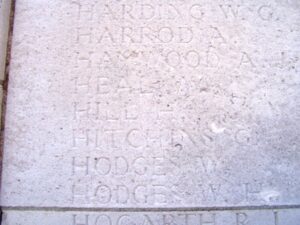
Owen Kennea, Sapper, 51656, Royal Engineers. Owen was the son of George and Margaret Kennea, of 5, Thomas Street, Pembroke. He enlisted on 5 September 1914 at Newport, Monmouth into the Royal Engineers. On 22 October 1914 Owen was posted to the 90th Field Company, Royal Engineers, which from January 1915 onwards was attached to the 9th (Scottish) Division, which was to become widely regarded as one of the best in the British Army. Owen landed in France on 13 May 1915, and moved with the company to Steenwerck. Owen looks to have been attached to the staff of a bomb (or hand grenade) making factory in Steenwerck. At around 5.50 p.m. on 27 May 1915, an explosion occurred in the factory, killing or badly wounding a large number of officers and men who were stationed in the immediate locality. Owen was 44 years old when he was killed that day, and is buried in Steenwerck Communal Cemetery, France.
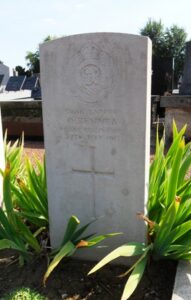
Edgar Lewis, Sergeant, 725073, Royal Field Artillery. Edgar was born in Monkton, the son of John and Margaret Lewis. The family later resided at Rose Villa, Jameston, Manorbier. He enlisted at Neath into the 2nd (Glamorgan) Battery, 1st (Welch) Brigade, Royal Field Artillery, which served with the 53rd (Welsh) Division. Edgar served with the Division throughout their campaign on Gallipoli, and was with the Division in Egypt when he Died on 23 March 1917, aged 31. Edgar is buried at Alexandria (Hadra) War Memorial Cemetery, Egypt in Grave D. 93.
John Mason, Stoker 1st Class, 229299, Royal Navy. John was born on 6 April 1887, the son of James and Hannah Mason, of West Orielton. John was a married man, with two children, who resided with his wife Beatrice Mason (nee Johns) at Waterloo, Pembroke Dock. He had enlisted into the Royal Navy on 6 April 1905, and from 7 September 1915 had served aboard HMS Marmion, a Moon Class Destroyer, which was launched on 28 May 1915. Whilst on patrol off the Shetlands on 21 October 1917, Marmion was involved in a collision with HMS Tirade, another Royal Naval destroyer, and sank. John was one of several seamen to lose his life in the sinking. His body must have washed ashore at Norway, and John is one of several sailors from Marmion to be buried in Fredrikstad Military Cemetery, Norway.
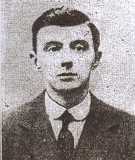
John (JJT) Morris, Private, 12839, Welsh Regiment. John was born at Openshaw. He enlisted at Pembroke into the 2nd Battalion, Welsh Regiment, which was part of 3 Brigade, 1st Division. The Division had been one of the first to arrive in France, fighting at the Battle of Mons, and taking part in the retreat to the Marne, where the Germans were stopped. They then fought at the Aisne, and at Chivy, before being moved North to Ypres. Here they fought at the First Battle of Ypres, where they again stopped the German Offensive, before wintering in Flanders. The following year saw them in action again at the Battle of Aubers, before moving South to Loos, where they fought during the Battle of Loos. John was killed on the second day of the battle, on 26 September 1915. He has no known grave, and is commemorated on the Loos Memorial, France.
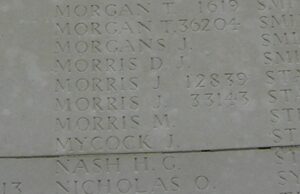
Hubert John Nicholas, Private, 1699, Welsh Regiment. Hubert was born at Monkton in 1889, the son of John and Annie Nicholas, of Priory Terrace, Monkton. The family later resided at Glais, near Swansea after Johns death. Hubert had married before the war, and resided with his wife Martha Elizabeth Nicholas at Boundry Place, Masons Road, Gorseinon, where he worked as a Steel Worker and Roofer. Hubert enlisted at Clydach into the 1/6th Battalion, Welsh Regiment. The battalion was one of the first territorial units to move to France in August 1914. Initially, in late 1914 and early 1915, they were on lines of communication and in July 1915 were based in the Locre and Kemmel area, facing the Germans who were on the high ground at Spanbroekmolen. The battalion was in the trenches, but also doing work repairing trenches etc. Hubert was killed in action near Kemmel on 5 August 1915, aged 26. He is buried at Lindenhoek Chalet Military Cemetery, Belgium. Hubert’s widow remarried after the war, becoming Mrs. Martha Elizabeth Maddock, of 3, Smith Row, Birchgrove, Swansea.
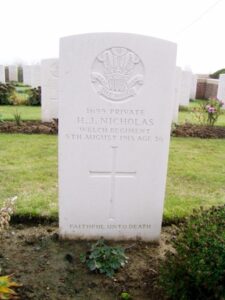
John Nicholas, Aircraftman 3rd Class, 19189, Royal Flying Corps. John was the son of William and Martha Nicholas, of 21, Long Mains, Monkton. He had enlisted into the Royal Flying Corps, where he became an Aircraftman 3rd Class. John was in training at the Recruits Depot at Farnham, Surrey when he died on 17 June 1916, aged 20. John is buried at Monkton, at St. Nicholas Cemetery.
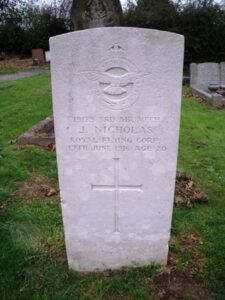
David Reynolds, Corporal, 118, Welsh Regiment. David was born in 1889, the son of John Reynolds and Sarah Reynolds, of Guilderoy, Hundleton. He worked as a stone mason and was an original member of the 1/4th Battalion, Welsh Regiment, the local Territorial infantry unit, for several years prior to the war. David married Sarah Walters, of Monkton, in 1913, and the couple had two sons born there over the coming years. Following the outbreak of war, the 4th Welsh mobilised at Carmarthen, as part of South Wales Brigade, Welsh Division and moved to Tunbridge Wells until the end of the month, before moving to Scotland to man the Forth and Tay Defences. On 17 April 1915 the battalion moved to Bedford, joining 158 Brigade, 53rd (Welsh) Division. On 19 July 1915 the entire Division sailed from Devonport for Imbros and on 9 August 1915 landed at Suvla Bay. The infantry moved off the beaches across the Salt Lake, under shellfire, into the scrub covered Chocolate Hill, but due to a lack of maps and no knowledge of the terrain, many of the units became disorientated, and the situation became chaotic. David, serving as a machine-gunner, was killed in action here on 13 August 1915. The 25-year-old has no known grave and is commemorated on the Helles Memorial, on Panel 140. His brother-in-law, Albert Clifford, also fell.
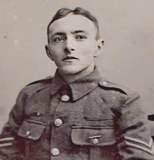
John Roberts, Private, 54526, Welsh Regiment. John was the son of William and Eleanor Roberts, of Taylors Lake, Pembroke. He had attested at Carmarthen into the Army, joining the 19th Battalion, Welsh Regiment, the Pioneer Battalion to the 38th (Welsh) Division. The division had moved to France during December 1915 and had spent almost six months in the line near Fleurbaix, before moving to the Somme, where they successfully captured Mametz Wood. They then moved to Ypres, where in 1917 the division captured the Pilckem Ridge, and aided in the capture of Langemarck, before moving to the Armentieres sector for the winter. In April 1918 the division moved to the Somme, and was stationed around Aveluy Wood for the next few months, before taking part in the great 100 days offensive which was to win the war. John was sadly taken ill just days before the war’s end. He died on 10 November 1918 aged just 21, and is buried at Awoingt British Cemetery, France.
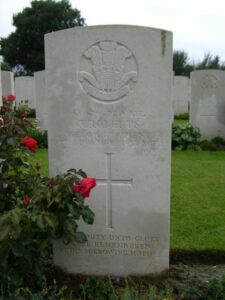
Thomas George Roberts, Private, 13540, Welsh Regiment. George was born at Pembroke. He worked as a groom for Colonel Young at Kidwelly prior to the war, and enlisted at Llanelli into the 9th Battalion, Welsh Regiment, which was attached to 58 Brigade, 19th (Western) Division. The Division assembled around Bulford during September 1914. Divisional training was completed near Tidworth, from March 1915, and the ‘Butterfly Division’ crossed to France between 11 and 21 July 1915, and moved to positions near Loos. The Division fought during the opening attack of the Battle of Loos, and then moved to the Somme, where they took part in the second wave of the attack on Ovillers-La Boiselle on 1 July, capturing the village at heavy cost, and fought through the Somme Battles of Pozieres and the Ancre in 1916. They then moved North to Ypres, taking part in the Battle of Messines. Thomas was killed at Messines on 23 July 1917. He is buried at Locre Hospice Cemetery, Belgium, in Grave Ref. II. A. 21.
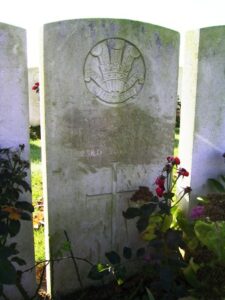
Sidney John Thomas, Lance Corporal, 8554, Welsh Regiment. Sidney was the son of Mesach and Annie Thomas, of Monkton. He enlisted at Pembroke Dock into the 2nd Battalion, Welsh Regiment at some time prior to the war. The battalion moved to France as part of 3 Brigade, 1st Division in August 1914, taking part in the retreat from Mons to the Marne. Sidney would have taken part in the Battle of the Aisne, where the battalion saw one of its men, William Fuller, become the first Welshman to gain the Victoria Cross during the war. The Division then moved to Ypres to help defend the city against German attack, and saw heavy fighting at Gheluvelt, on the Menin Road. Sidney was killed in action here while the 2nd Welsh were taking up the line at Gheluvelt on 25 October 1914, aged 26. He has no known grave and is commemorated on the Ypres (Menin Gate) Memorial, Belgium. Sidney does not appear to be commemorated locally.
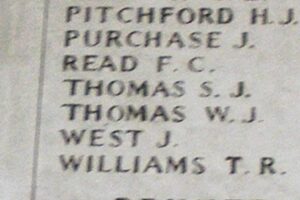
William James Vaughan, Private, 2462, Welsh Guards. William was born in 1895, the son of Martin and Frances Vaughan, of India Road, Monkton. He enlisted at Pembroke into the 1st Battalion, Welsh Guards. This was a new regiment, formed in 1915, and joined 1 Guards Brigade, Guards Division. This Division has the distinction of being formed in France in August 1915. The various Guards units that had been with other Divisions were withdrawn to be brought together to create this fine formation. It remained on the Western Front throughout the war and saw its first major action during the Battle of Loos on the 25th September, 1915, remaining in the area during the coming months, where they also fought in the subsequent Action of Hohenzollern Redoubt. In July, 1916 the Division moved to the Somme, where they fought at the Battle of Flers-Courcelette, and then at the Battle of Morval, capturing Lesbouefs Village. They remained on the Somme over that winter, and this is where William was killed on 10 December 1916, aged 21. He is buried at Bronfay Farm Military Cemetery, Bray Sur Somme, France.
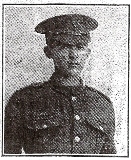
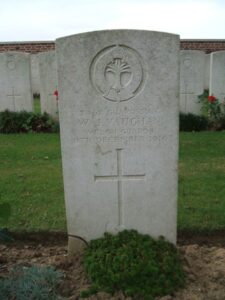
Gwendoline Ida Williams, Nurse. Gwendoline was born on 28 February 1893, the daughter of William Williams and Grace Tweedie Williams (nee Howard), of 9, South Terrace, Monkton. By 1911 Gwendoline was training as a Drapery Apprentice, but volunteered to train as a nurse soon after the outbreak of war. Gwendoline worked throughout the war at the Pembroke Dock Military Hospital. She survived the war and continued working as a nurse, but died of typhoid on 19 March 1923. The 30-year-old was buried in Monkton Cemetery. Gwendoline is not commemorated as a war casualty by the CWGC, as she died after the cut-off date for commemoration and was also a civilian nurse. She is not named on the Monkton Priory Memorial, just on the Cenotaph outside Pembroke Castle.
George Wiltshire, Sergeant, 14835, South Wales Borderers. George was born in 1875 at Batheaston, Somerset. He married Florence Annie Brace at Pontypridd on 25 February 1908, and the couple moved to 21, Mansel Street, Orange Gardens, Pembroke, where Florence gave birth to their four children. George was an army reservist at the outbreak of the Great War, and re-enlisted at Pembroke on 30 September 1914 into the South Wales Borderers. He was originally posted to the 5th Battalion, South Wales Borderers, but on 20 March 1915 was instead posted to A Company of the Depot Battalion, South Wales Borderers. On 3 December 1915 George was discharged as medically unfit, and he died at Carmarthen Hospital on 14 April 1916, aged 40. He is buried at Monkton, at St. Nicholas Cemetery. Florence later moved to 24, Whitchurch Road, Prees, Salop.
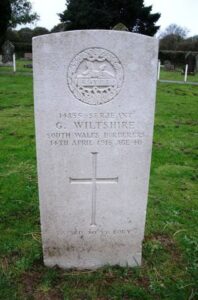
Francis George Wynne, DSO, Major, Loyal North Lancashire Regiment. Francis was the son of Major Mark Saurin Wynne (of the 81st Regiment) and Susanna Frances Wynne, of Mellaston, Pembroke. He served with the 2nd Battalion, Loyal North Lancashire Regiment, which was part of 94 Brigade, 31st Division. The Division didn’t get to France until 27 May 1918, but Francis had been in France since at least early 1916, where he was awarded his Distinguished Service Order for Conspicuous Gallantry. The Citation in the 26 September 1916 edition of the London Gazette reads- ‘For conspicuous gallantry and devotion to duty in action. When the enemy, in overwhelming numbers, attacked our trenches, he remained at his post, though wounded and unable to stand, until the enemy were beaten off. He not only commanded his own company, but took charge of another, the officers of which had become casualties.’ Francis was killed in action on 10 April 1918. He is remembered on Panel 7 of the Ploegsteert Memorial, Belgium.
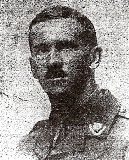
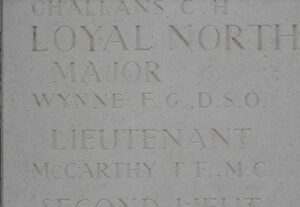
World War Two, 1939-1945
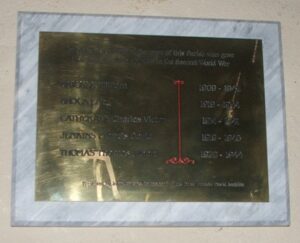
Charles Albert Henry Ayling, Sergeant (Pilot), 561445, Royal Air Force. Charles was the son of Amelia Ayling, of Cowplain, Hampshire. He married Joan M Morris at Pembroke in 1939, and at the outbreak of war volunteered to serve with the Royal Air Force, training as a fighter pilot. He first served with 43 Squadron in 1939, flying sorties from Acklington, Northumberland and from February to May 1940 flew on patrols from Wick. On 31 May 1940 the squadron returned to Tangmere, and took part in sorties over France, following the German invasion. Charles was forced to crash land his damaged Hurricane after a dogfight over the Somme, and escaped three days later after finding an abandoned Hurricane at Gavray. He fought with the squadron until being transferred to 66 Squadron on 10 September 1940. The squadron was based at Kenley, and operated Spitfires, moving to Southampton the following day. Charles was transferred to 421 Flight on 7 October, but within days was shot down and killed during a dogfight over Hawkinge on 11 October 1940. He was 29 years old, and his body was brought back at the request of his wife to be buried at Pembroke (Monkton St. Nicholas) Cemetery. His brother, Albert Edgar Ayling, was killed whilst training in Canada with the Empire Air Training Scheme on 10 August 1942, aged 19. Although Charles is buried at Monkton, for some reason he is not commemorated locally.
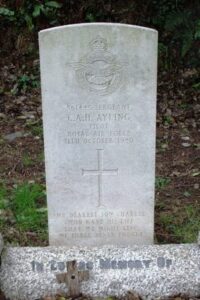
William George Brickle, Canteen Manager, C/NX 195, Royal Naval Canteen Service. William was the son of William and Sarah Brickle, of Monkton, and the husband of Mary Margaret Annie Brickle, of Goodwick, Pembrokeshire. He served with the Royal Navy, aboard HMS Walney. Walney was a former US Coastguard cutter, which had been leased to the Royal Navy. She had served on the Atlantic Convoys early in the war, under the command of Western Approaches Command, and was nominated for special duties during Operation Torch, the Allied invasion of North Africa. Her task was to break into Oran harbour, so she sailed from the Clyde on 26 October 1942, as part of the escort for the military convoy MKF-1 to Gibraltar. On arrival in November, she embarked troops to carry out a landing inside the harbour. The operation commenced on 8 November 1942, but rapidly ran into trouble, when Walney came under heavy fire from shore defences, and rammed the outer, and then the inner booms, causing her to sink after being struck by shells from the French sloop La Surprise. Over 80 of her crew and most of the troops being carried went down with the ship. William was one of the men killed aboard Walney on 8 November 1942. He was 33 years old, and is commemorated on the Chatham Naval Memorial, Kent. He is also commemorated on the Goodwick Memorial.
Eric Brock, Lance Corporal, 2008307, Royal Engineers. Eric was the son of William and Elizabeth Ann Brock, and the husband of Lucy May Brock, of Pembroke. He served with 284 Assault Squadron, Royal Engineers, which was an armoured assault unit. Eric landed on the Normandy Beaches in June 1944, and took part in the break out of Normandy, and the drive north towards Belgium. On 20 October 1944, at a farm on Isabelleweg near the town of Ijzendijke, a horrific explosion occurred, which caused the death of forty-one British and Canadian soldiers and caused injury to another fifty-one some of which would be fatal. One of the dead was Eric. He was killed on 20 October 1944, aged 25, and is buried at Adegem Canadian War Cemetery. The explosion was never fully investigated, but at the time, the men of 284 Assault Squadron were busy repairing and refuelling several tanks, and it is thought that an unstable load of nitro-glycerine had exploded, killing the men.
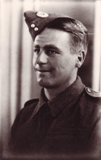
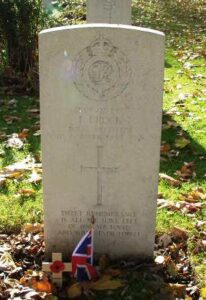
Charles Victor Catherall, Sergeant (Observer), Royal Air Force Volunteer Reserve. Charles was the Husband of Margaret Catherall, of Monkton, and served as an Observer with 37 Squadron, RAF. The Squadron was a heavy bomber squadron, equipped with the Vickers Wellington. In November 1940 the squadron was transferred to Egypt, via Malta, from where it carried out a number of sorties. Once in Egypt the squadron took part in the campaign in the western desert, supporting the Eighth Army against Rommel and the Afrika Korps. It also took part in the suppression of the Iraqi revolt and sent a detachment to Greece in March 1941. Charles was killed in North Africa on 16 November 1941. He was 27 years old, and is commemorated on the Alamein Memorial, Libya.
Francis David Jenkins, Serjeant, 7596419, Royal Electrical And Mechanical Engineers. Francis was the husband of Celia Ann Jenkins (nee Hobbs), of 139, Main Street, Pembroke. He served with the Royal Electrical and Mechanical Engineers and was posted to Singapore, where he became attached to the 1st Battalion, Cambridgeshire Regiment. Francis was captured, along with the remnants of his battalion, during the surrender of Singapore to the Japanese in December 1941. He died as a Prisoner of War in Japan on 7 April 1945 aged 26, and is buried in Yokohama War Cemetery, Japan.
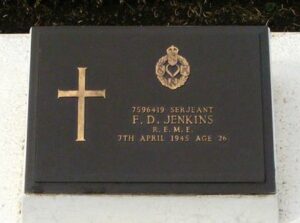
Thomas Albert Thomas, Guardsman, 2734724, Welsh Guards. Thomas was the son of William and Elizabeth Thomas of Pembroke, and served with the 3rd Battalion, Welsh Guards. The Battalion sailed for North Africa on the 5th February 1943, and fought there until moving to Italy early in 1944. Thomas was killed during the fighting at Monte Cerasola on 11 February 1944. He was 24 years old, and is commemorated on the Cassino Memorial, Italy.